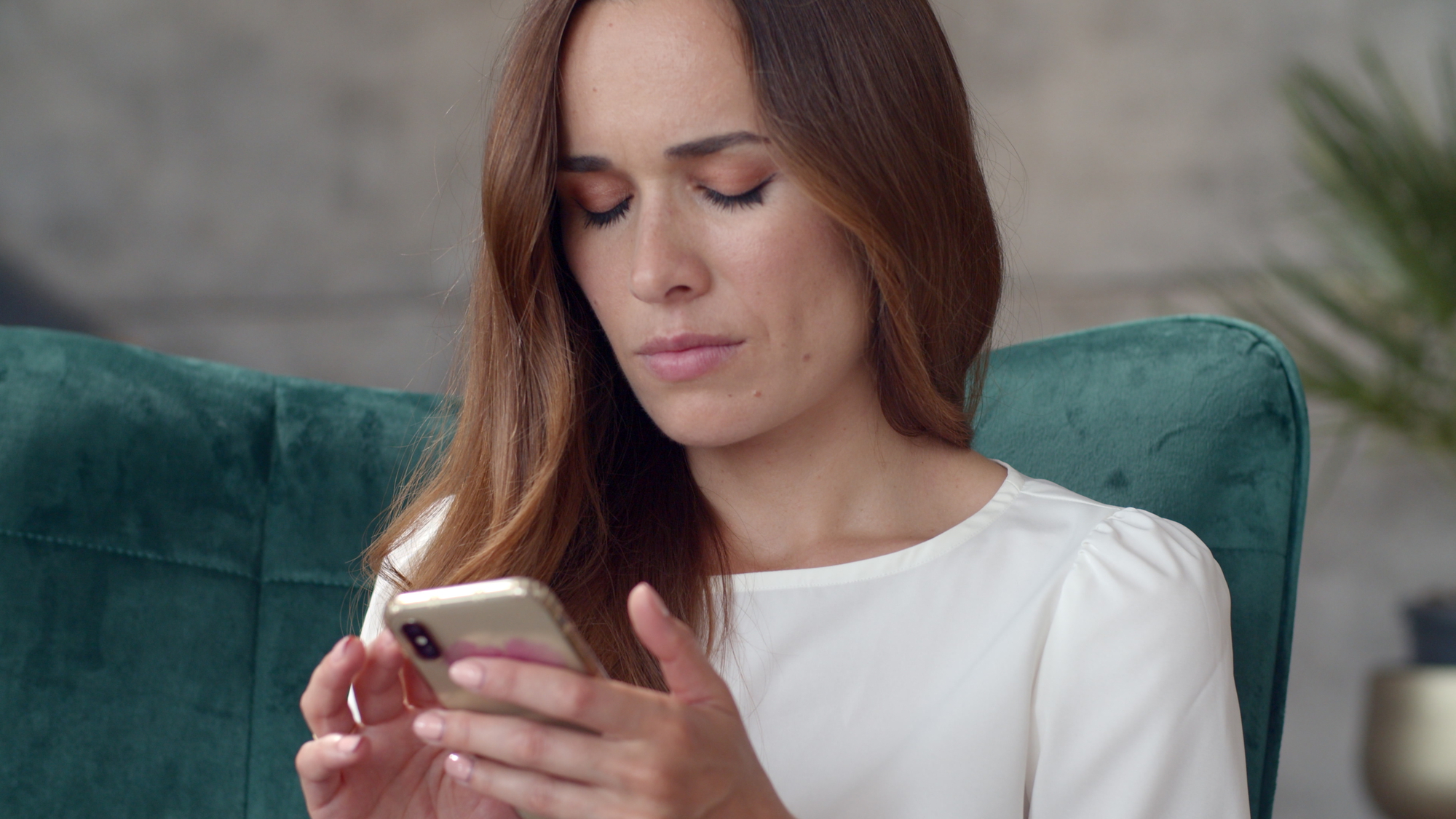Follow these texting rules for a harmonious relationship.

Texting is an important part of every relationship. Healthy communication is key, and this includes communicating over texts.
However, there are some unhealthy habits people may have when it comes to texting their partner.
Let’s see what is healthy and what is unhealthy when it comes to texting your significant other.
1. Don’t text too much (for either of you).

How much texting is healthy?
There’s no specific number of texts that would mean your texting habits are healthy or not. However, there should be consistency and equality in how much you text each other.
Some couples text all day while others get in touch only a couple of times during the day. Both can be healthy texting habits as long as you’re equally initiating texts and have consistency in the way you text.
It’s also important to respect your partner’s time. Don’t engage in excessive texting while you know that they are at work or have other responsibilities that they need to focus on.
How can you know what is excessive texting if there is no right amount of texts to exchange during a day?
Well, you will text your partner much more often than they’d like you to. They’ll show you that even if they don’t tell you directly. Someone who wants to keep texting with you will be engaged in conversation and ask questions. If they instead respond with short sentences and “yes” and “no” answers, they’re probably not in the mood for texting.
If you are constantly texting your partner, you may appear needy, clingy, or even desperate. You might also seem jealous and possessive if you need to check up on them too often.
2. You should both initiate texting sometimes.

Your texting needs to be reciprocal and mutual for it to be healthy. This doesn’t apply only to the initiation of texting but the way you communicate as well.
Each of you should equally contribute to the conversation. Your communication should flow naturally. You should also feel equally engaged in the conversation. Healthy back-and-forth texting is a good way to communicate as a couple. If only one person is initiating texting or there’s an imbalance in how much you text each other, it might be a sign of a one-sided relationship.
It’s not healthy if you are always the first one to initiate texting. It might lead to texting your partner much more frequently than they’d like to. Don’t make yourself too available. Text your partner when you’re thinking about them, but let them text first sometimes too.
When you have other things to do, focus on those things instead of initiating a conversation with your partner. Texting each other 24/7 might be fun when you’re just starting to date. However, it could quickly become exhausting and unhealthy, especially if you’re always the first one who texts.
3. Maintain boundaries while texting.

Healthy boundaries should exist in your relationship when you’re texting just the same as they do when you see each other in person. These boundaries might mean that you won’t fight over texts, that you won’t text each other during business hours or late at night.
You can create your own boundaries, but there should definitely be some of them while you’re texting. Boundaries ensure your texting remains healthy.
The most important boundary is that you know which conversations you should leave for when you meet in person. Fighting shouldn’t be done through texts and any sensitive topics should be discussed in person.
If you start arguments over texts or text during an inappropriate time, you’re not respecting the boundaries you and your partner have set.
4. Set realistic expectations surrounding texting.

It seems natural to expect your partner to always respond to your texts right away and text first as often as you do. In a way, these expectations aren’t unhealthy, but they can create unhealthy pressure.
It’s okay that you expect certain things from them and that you talk about your expectations. Let your partner know how you feel when you get a cold and short response to a very long text or when you have to wait for hours for a response.
However, make sure to keep in mind all the different situations that could be preventing your partner from responding in a timely manner or engaging in the conversation.
Don’t create unnecessary pressure by freaking out if your partner doesn’t text back right away or gives you short answers. Consider what they may be doing at that moment. When you’re sitting and looking at your phone, waiting for a text, it can be easy to forget that the other person might not be doing the same. They could be at work, with friends, running errands, or shopping.
They could be doing anything while they’re texting with you so don’t expect them to be available at all times. You can expect a response, but even that might not happen every time. Your partner could sometimes simply forget to respond. Don’t make a big deal about it if they have a reasonable explanation for not responding right away or at all.
5. Communicate about texting.

Talk to your partner about your expectations when texting and anything else regarding this topic. Also, you should be able to talk about anything that you can text about. Some couples communicate differently when they text and when they talk in person. This can be confusing and create unnecessary problems.
Don’t separate your regular communication from the way you communicate through texts. As long as you keep the sensitive issues for conversations in person, your communication should be the same when you text and when you meet each other to talk.
You should be able to communicate about texting. Continuing the conversation you had through texting once you meet in person shouldn’t be an issue, and vice versa.
You should feel able to tell your partner if their texts hurt you or you expected them to text you more often. Communicate about everything that you feel needs improvement, whether it’s about your texting habits or any other part of your relationship.
6. Don’t neglect the little texts that speak volumes.

Texting your partner just to remind them that you’re thinking about them is good for your relationship. This includes sending funny notes, romantic texts, or memes. You should have plenty of texting topics besides reminding each other of errands and scheduling dates.
Sometimes, just sending a romantic emoji can make your partner feel special. You could also send good morning and good night messages. Start and end the day by talking to each other even if you don’t talk a lot during it.
If you instead use texting only for scheduling dates and reminding each other of chores, you’re missing out on a lot of romance and flirting that texting has to offer. Send a text just to let your partner know that you’re thinking about them. You don’t have to turn it into a long conversation or ask them about their whereabouts. Just letting them know that you have them on your mind is enough. It can be incredibly romantic and healthy for your relationship.
7. Get used to each other’s texting styles.

People text differently. While there are some who write long messages, some send short sentences in several consequent messages. It would be perfect if you and your partner would have the same texting styles. It can be annoying when your texting habits are too different.
For instance, your partner might respond in only short sentences and send a lot of emojis. They could ignore your messages for hours before responding while you text everyone right away. Differences like these can make texting annoying, but you can adjust to each other’s texting style.
If the way you go about texting is too different from how your partner prefers to text, it might create problems in your communication. Try to adjust to each other’s style of texting. For instance, if they never send long texts, try not to send them long texts either because they probably don’t like receiving them. If instead they always send several paragraphs, don’t respond with only a short sentence.
8. Consider the tone of your texts.

It might require some effort to get across the right tone through texting. While saying “What are you doing?” can sound casual when you say it, if you text it, it can even seem aggressive, unlike “Hi? What’s up?” which is clearly friendlier.
Texting the healthy way requires putting some thought into what you’re going to send. Using abbreviations and bad grammar with no punctuation can lead to a lot of misunderstandings. In addition, it makes it seem like you don’t really care about what your partner is telling you.
Pay attention to the tone of your texts and put some thought and time into writing them. Texting “idk” instead of “I don’t know, can you give me some time to think about it?” can seem childish and careless. Texting things like “Where are you?” or “What you are doing?” can make you look possessive when a simple “Hey, what’s up?” would sound much more casual.
Thinking about these things can prevent unnecessary problems in communication.
9. Use emojis sensibly.

Emojis are fun and help get the tone of the message across. Using them in a relationship is recommended and can be very romantic. A message could even be a single emoji that would let your partner know you’re thinking of them.
However, using too many emojis too often can make it seem like you’re not taking the topic seriously. It could make you look childish or too impatient and too careless to think of a thoughtful response.
So, while it’s healthy to use emojis in a relationship, remember that too much of anything is bad for you, and don’t overuse them.
On the flip side, you could be using emojis on such rare occasions that it makes you seem cold and uninterested. Keep in mind that emojis are there to help you express your feelings through texting. So use them to let your partner know when you’re smiling or would like to give them a kiss.
10. Don’t try to resolve conflicts over text.

Conflicts should be resolved in person, and they rarely get resolved through texting. You can’t hear each other’s tone of voice and see each other’s expressions when you text. This makes things difficult to resolve, and conversations could easily stop being meaningful.
If you are having a fight, insist that you talk about it in person or at least over the phone, but not through texting. Use texting to strengthen your bond, not get into fights.
If you start fighting over texts, call your partner and ask that you talk to them about it in person. Texting instead will likely make things even worse, not better.
Even if you think that texting gives you the option to think about your responses, it’s better to have such a conversation in person. Your tone of voice, facial expressions, and body language are very important in conflicts. You can’t know those things from what someone texted you.
Texting while you’re angry can make you write things that you’ll later regret. Plus, your messages are likely to be interpreted differently than you’d want them to.
11. Stop to process your emotions before texting/replying.

Just like you shouldn’t text your partner when you’re angry at them, you should take time to process any other strong emotions before texting them.
Texting gives us a chance to stop and think about what we are going to say next. However, we so often text quickly without even thinking about what we’re writing.
Since it’s harder to convey a message through texting than it is in person, you should take some time to think about what you are going to write. When you are emotional, whether those emotions are negative or positive, you should put down your phone. Process your feelings before responding.
Keep in mind that you don’t ever have to respond instantly. Take a few minutes to think about what you’ll say, especially if you’re emotional. Imagine if you were writing your partner a letter. Remind yourself that there’s plenty of time to think about what you’re going to write.
This doesn’t mean that you should overwhelm them with a long message explaining your feelings. Process your emotions first, then write the message.
12. Respect your partner’s time.

Your partner probably can’t text with you when they’re working or trying to sleep, so take note of the time for texting too. Texting your partner any time you think of them is fine. However, don’t start conversations when you know that they’re busy.
You and your partner shouldn’t constantly be available to each other. In a relationship, it’s important to respect your partner’s time, privacy, and independence. So, if they are at work, or hanging out with friends, don’t make them have a long conversation with you through messages.
If your partner clearly wants to keep texting you even though they’re doing other things, text them. Show respect for their time and responsibilities by asking whether they want to continue the conversation after they are done. When they go out with friends, let them enjoy their time away from you. If you want to send something, just send a reminder that you’re thinking about them.
13. Be wary of your partner ignoring your texts (if it’s a pattern).

What about messages that are left on read? Your partner might ignore your messages. This can make you feel hurt but give them some time to respond and don’t jump to conclusions.
While ghosting happens, a person could simply forget to respond. Don’t bombard their phone with messages if they don’t respond. Wait for an explanation instead, and you’ll probably get one.
If not, you could let your partner know how it makes you feel when they ignore your texts. If this is a habit of theirs, it’s best to talk about it and try to get them to see things from your point of view.
Some people will not respond to texts when they’re upset. It’s a form of manipulation like giving you the cold shoulder. Your partner should instead let you know that they’re upset and need some time away from you. As long as you can communicate, you can resolve everything.
If your partner really ghosts you instead, this is not just a problem in communication. It didn’t start with your text and can’t end with a text. However, unless your partner has given you a reason to think that they’re ghosting you, don’t assume it just because you didn’t get a response.








